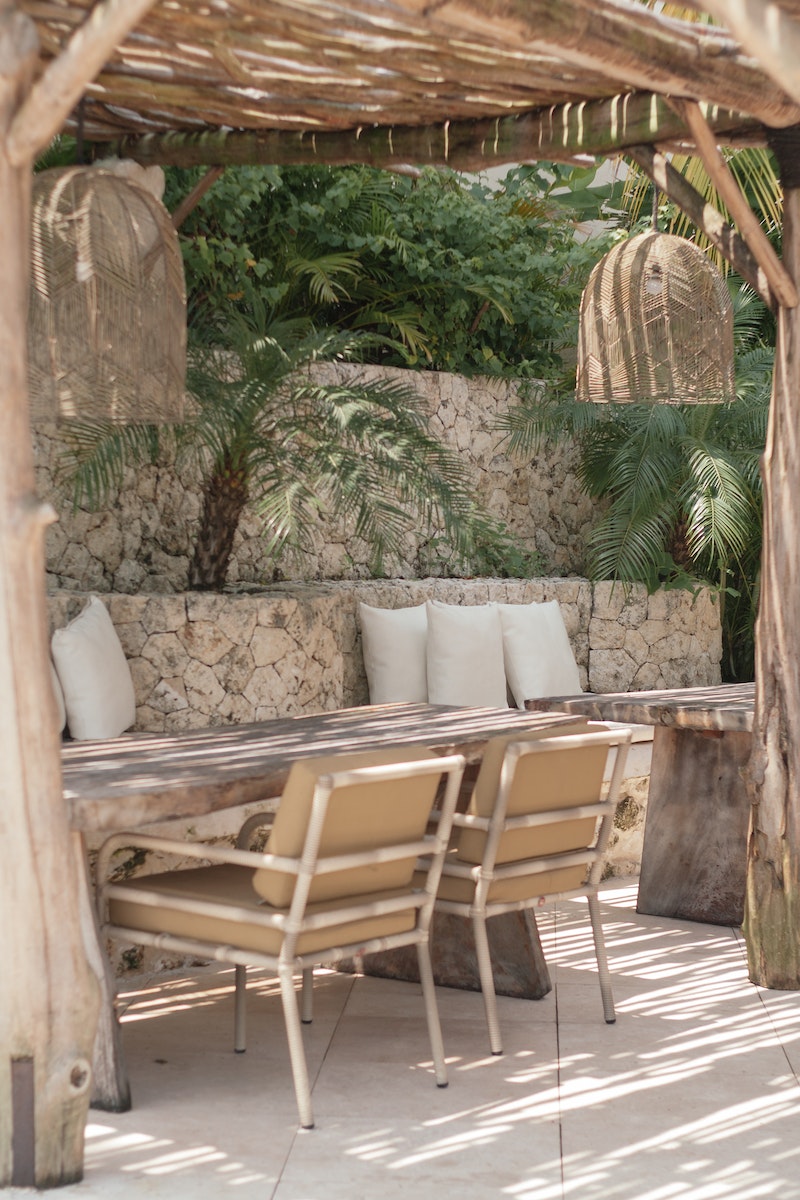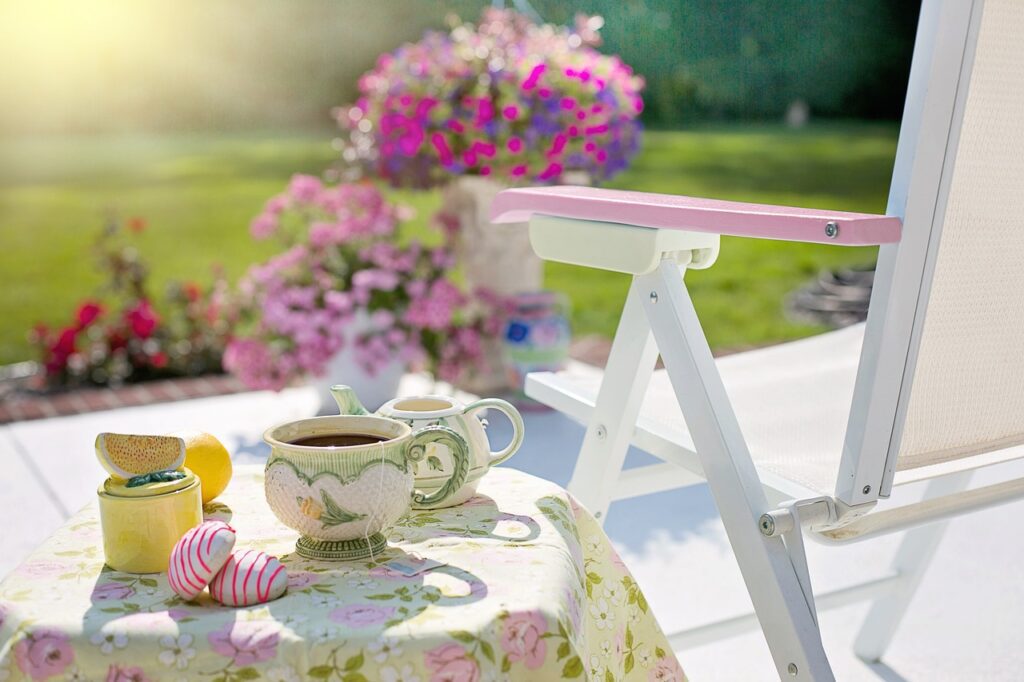Do you want to learn how to tell if your patio furniture is aluminum? Learn the key characteristics, conduct simple tests, and make informed decisions for your outdoor space. So that of you prefer aluminum furniture, you can be sure you are getting the genuine and not a counterfeit.
Aluminum patio furniture is a popular choice due to its durability, lightweight nature, and resistance to rust and corrosion. However, determining whether your furniture is made of aluminum or another material can be challenging without proper guidance.
How to tell if your patio furniture is aluminum?
Contents
In this comprehensive guide, we will walk you through various methods to tell if your patio furniture is made of aluminum. From visual cues to simple tests, you’ll gain the knowledge and confidence to make informed decisions for your outdoor space. So, let’s dive in and unlock the secrets to identifying aluminum patio furniture!
Understanding Aluminum Patio Furniture
Before we delve into the methods of identification, let’s familiarize ourselves with aluminum patio furniture and its notable characteristics. Understanding the material will help us better differentiate it from other options.
- Durability: Aluminum is known for its exceptional durability, making it suitable for outdoor use. It withstands various weather conditions and requires minimal maintenance.
- Lightweight: One of the significant advantages of aluminum patio furniture is its lightweight nature. It allows for easy movement and rearrangement of furniture pieces.
- Rust and Corrosion Resistance: Aluminum naturally resists rust and corrosion, making it an excellent choice for outdoor furniture that is exposed to moisture.
- Versatility: Aluminum patio furniture comes in a variety of styles, finishes, and designs, offering versatility to match any outdoor aesthetic.
Now that we understand the basic characteristics of aluminum patio furniture, let’s explore the methods to identify it.
Visual Cues: Examining the Appearance
When trying to determine if your patio furniture is made of aluminum, pay attention to its visual cues. Certain characteristics can provide strong indications of the material used.
- Lightness and Thinness: Aluminum furniture is noticeably lighter and thinner compared to other materials like wrought iron or steel.
- Smooth and Shiny Surface: Aluminum often has a smooth and reflective surface, providing a sleek and modern appearance.
- Metallic Look: Look for a metallic appearance that is consistent across the entire furniture piece. Aluminum typically maintains its metallic sheen even when painted or coated.
- Welded Joints: Aluminum furniture is commonly constructed using welded joints, which are usually clean and smooth. Look for seamless connections between various parts.
- Hollow Construction: Aluminum furniture may have a hollow construction, contributing to its lightweight nature. You may be able to spot openings or spaces in the frame.
Testing Methods: Put It to the Test!
To further confirm if your patio furniture is made of aluminum, you can conduct a few simple tests. These tests will help you differentiate between aluminum and other materials.
- Magnet Test: Aluminum is non-magnetic, unlike materials such as steel or iron. Place a magnet against your furniture and observe if it sticks. If the magnet does not cling to the surface, it is likely made of aluminum.
- Weight Test: As mentioned earlier, aluminum is significantly lighter than materials like wrought iron. Lift the furniture or certain parts of it to gauge its weight. If it feels notably lightweight, it could be aluminum.
- Tap Test: Give the furniture a gentle tap and listen to the sound it produces. Aluminum generally produces a high-pitched, ringing sound, while other materials like steel or iron tend to produce a dull thud.
- Cold Touch Test: Aluminum has excellent thermal conductivity. Place your hand on the furniture’s surface and assess its temperature. If it feels noticeably colder than the surrounding environment, it could be aluminum.


FAQs about how to tell if your patio furniture is aluminum
Q: Can aluminum patio furniture be painted?
A: Yes, aluminum patio furniture can be painted. However, it is important to prepare the surface properly by cleaning and sanding it before applying paint or a new finish.
Q: How do I clean and maintain aluminum patio furniture?
A: Cleaning aluminum patio furniture is relatively simple. Use mild soap and water to remove dirt and grime. Avoid abrasive cleaners or brushes that can scratch the surface. Regularly rinse and dry the furniture to prevent water spots and maintain its appearance.
Q: Is aluminum patio furniture resistant to rust?
A: Yes, aluminum is naturally resistant to rust and corrosion. This is one of the reasons why it is a popular choice for outdoor furniture. However, keep in mind that other components of the furniture, such as screws or hardware, may not be made of aluminum and may be prone to rust.
Q: Can I leave aluminum patio furniture outside year-round?
A: Yes, aluminum patio furniture is designed to withstand outdoor conditions. However, it is recommended to cover or store the furniture during harsh weather conditions or when not in use for extended periods to prolong its lifespan.
Q: How do I protect aluminum patio furniture from scratches?
A: While aluminum is durable, it can still be prone to scratches. To protect your furniture, use cushions or furniture covers, and avoid dragging heavy objects across the surface. Felt pads can be applied to the bottom of chair legs to prevent scratching on hard surfaces.
Final remarks on how to tell if your patio furniture is aluminum
These tips should help with how to tell if your patio furniture is aluminum. Identifying if your patio furniture is made of aluminum is crucial when making purchasing decisions or determining maintenance requirements. By examining visual cues, conducting simple tests, and considering the characteristics of aluminum, you can confidently differentiate it from other materials.






